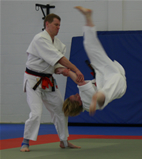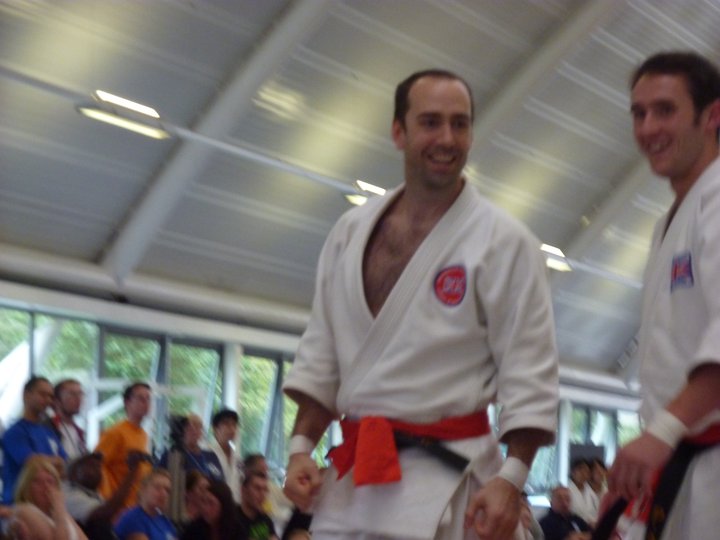Competition
There has always been a debate over the inclusion of competition into Aikido. On the one hand there are those who believe there can be no effective competition in Aikido because each move restrains the attacker completely when done effectively. Like with Judo, Kenji Tomiki had a vision to design a syllabus which enables students to use Aikido in a safe and sporting environment where they can challenge the effectiveness of their techniques in a free play situation.
This competitive vision for Aikido has been developed over the years within the Tomiki Aikido arena and we now have local, national and international competitions. Within our clubs and Tomiki Aikido clubs, we see competitive Aikido as an integral part of our development as effective Aikidoka. We believe it is very difficult to practice a martial art unless there is some form of free play which enables you to practice techniques that are not coming from a "predefined" attack.

In our competitions there are generally 2 general forms of competition (and not all of them involved getting black and blue...  )
)
Demonstration Competitions:
This is done as a paired event. As a pair, you demonstrate a set of techniques (Kata) to the best of your ability with one person demonstrating these techniques on their partner.
These competitions usually have 2 pairs demonstrating/competing at the same time; often both pairs are demonstrating the same techniques. The pair, who demonstrates better all-round Aikido, will win and proceed to the next round where they will demonstrate their techniques again.
These competitions give Aikidoka a chance to perfect their techniques in a non-aggressive environment and help student work towards perfecting their Aikido.
Freeplay (Randori) Competitions:
This is a more realistic (full contact) competition, where individual compete in a hand to hand situation where they can test their individual skills in a freeplay; but controlled environment. The appearance of this form is heavily influenced by judo randori with several changes designed to enhance the use of aikido techniques and can be a very dynamic event.
Normally, one competitor has a tanto (training knife - usually stuffed) and the other competitor is unarmed. As Aikido is based on self-defense, it is this unarmed competitor who can earn the larger points by defending themselves against the "attacker" (person with the tanto). After 90 seconds, the tanto is swapped over, so both competitors get the opportunity to defend themselves.

In this competition, both aikidoka are expected to perform techniques on one another and attempt to resist and counter each other. The attacker attempts to "stab" the defender with the tanto while the defender attempts, to throw or perform joint-locks on the attacker. In this controlled environment and for safety, only seventeen basic aikido techniques can be used. The attacker is expected to resist or counter with only five different techniques. In this form of randori, either of the participants may throw their opponent to defend themselves.
The scoring is similar to Judo with Yuko, Wasa-ari and Ippons. However, in Aikido Randori competitions, you can also gain points for a positive strike with the tanto (1 point) and you compete for the whole 3 minutes, allowing the scores to have no real limits.
"Aikido competitions give you another chance to improve your Aikido skills. You can improve your techniques for Kata as well as have fun competing in the Randori.... You really get to see if it works!"


